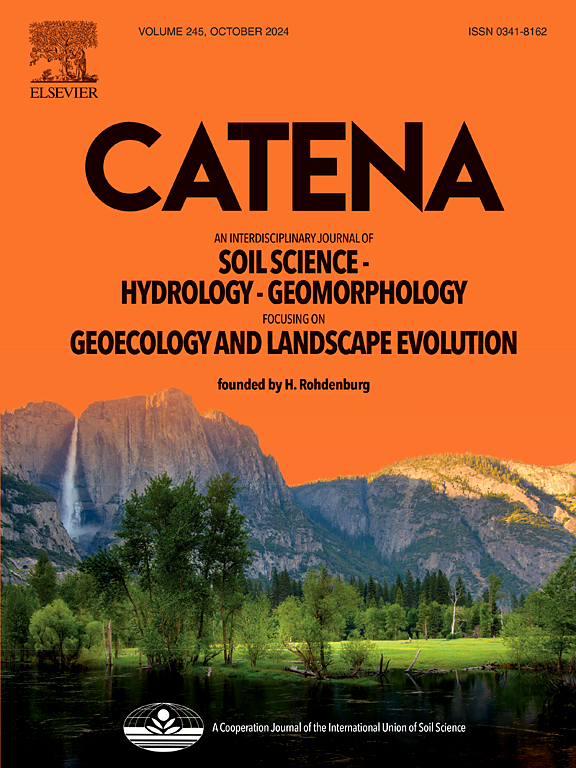Effect of shrubland-to-grassland conversion on soil water storage and infiltration capacity in Loess Plateau region of China
The increased planting of vegetation has accelerated the consumption of soil water, thereby threatening the survival of vegetation and affecting the sustainability of water resources in semiarid and arid areas. Thus, alleviating the high consumption of soil water caused by afforestation is an important practical problem. In this study, a vegetation conversion field experiment was conducted (three fields of shrubland (Caragana microphylla) converted into natural grassland (Stipa bungeana) and planted grassland (Leymus chinensis)) and the soil water content (SWC), average infiltration rate (IR), soil porosity, soil bulk density (BD), evapotranspiration (ET), above-ground biomass (AGB), and leaf area index (LAI) were measured. The results showed that BD, ET, AGB, and LAI decreased significantly by 5-82 % after conversion from shrubland to grassland, whereas the average IR increased significantly by 138 %. The recharge depth of soil water in planted and natural grassland reached 60-100 cm and 120-220 cm in a dry year and normal precipitation year, respectively. Soil water storage increased by 23 % in the 0-400 cm depth after shrubland conversion to grassland. The soil water storage in the 0-100 cm depth increased significantly with the monthly precipitation in planted and natural grassland, but did not change significantly in shrubland. The results further indicated that shrubland-to-grassland conversion could effectively replenish soil water storage by changing average IR and ET. These findings show that shallow-rooted grasses can be planted to alleviate excessive water depletion and they should be considered for future revegetation in water-scarce areas.
相关推荐
- Biophysical factors affecting transpiration of typical afforestation species under environmental change in the Loess Plateau, China [2025-02-01]
- Effects of biochar versus film mulching on soil hydrothermal properties and wheat crop performance in semi-arid loess [2025-02-01]
- Effects of Biomass and Soil Water Content Distribution on Cosmic Ray Neutron Probe Measurement [2025-02-01]
- Good harvests of winter wheat from stored soil water and improved temperature during fallow period by plastic film mulching [2025-02-01]
- A novel comprehensive model of set pair analysis with extenics for river health evaluation and prediction of semi-arid basin- A case study of Wei River Basin, China [2025-02-01]



